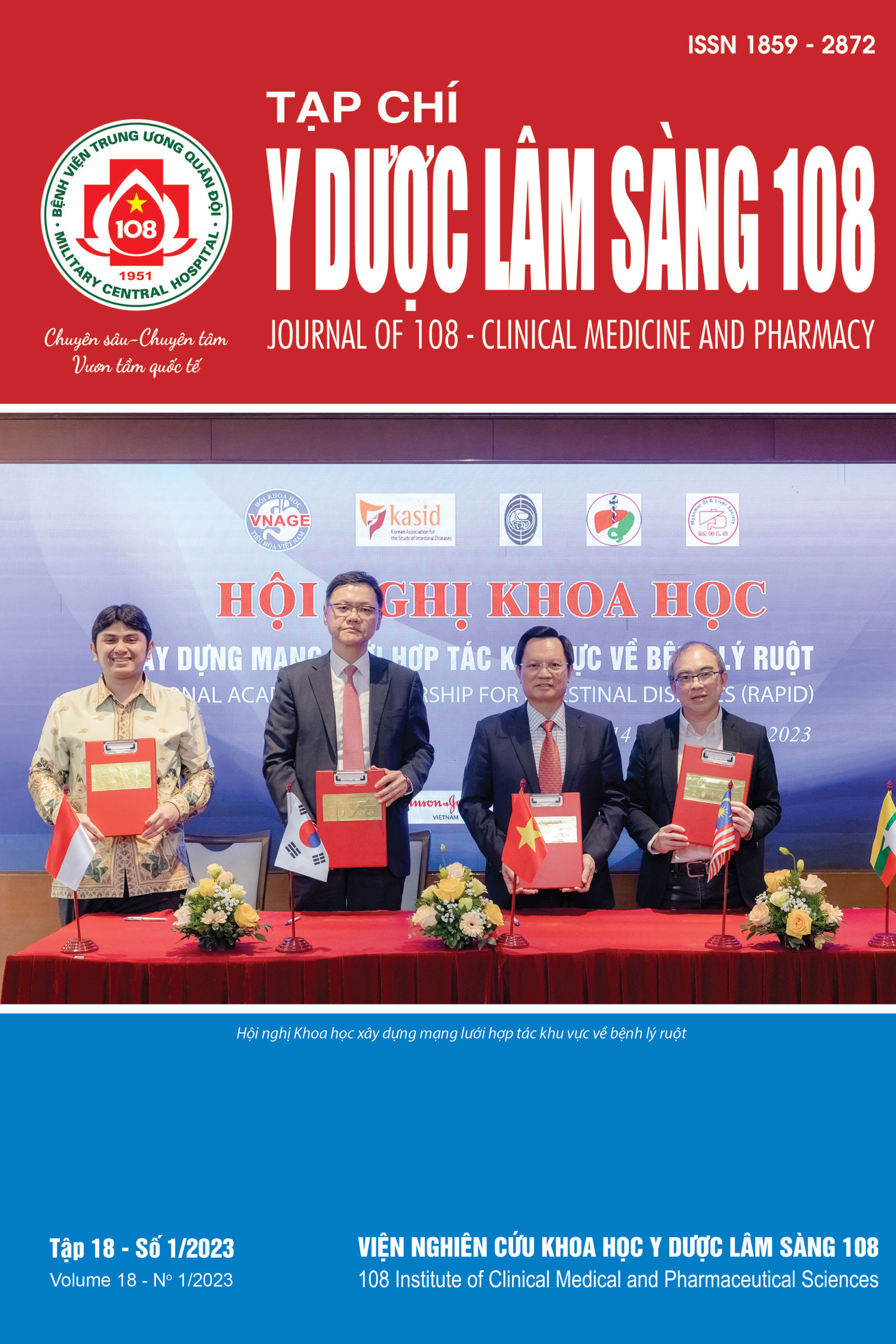Result of transcortical bone screw surgery in lumbar spine instability
Main Article Content
Keywords
Abstract
Objective: To evaluate the results of transcortical bone screw surgery in lumbar spine instability. Subject and method: Retrospectively describe a series of 25 patients with single level degenerative lumbar spine instability who were treated by transcortical bone screw surgery combined with transforaminal lumbar interbody fusion at the Department of Neurosurgery, Cho-Ray Hospital on 01/06-31/12/2018. Result: Mean surgical time 156.6 ± 29.4 minutes, incision length 4.86 ± 0.55cm, blood loss 190.6 ± 26.93ml, post-operative recovery time 3.67 days. Pain level according to VAS scale pre-operative, at hospital discharge, and 6 months post-operative, respectively: VAS back pain 6.04 ± 1.09; 4.36 ± 1.25; 2.8 ± 0.7 VAS root pain 5.92 ± 1.08, 4 ± 0.95, 2.76 ± 0.72. JOA score pre-operative, at discharge, 6 months post-operative were 10 ± 2.27, 12.88 ± 3, 18 ± 2.42, respectively. The very good and good recovery rate according to Hyrabayashi based on JOA was 76%. The degree of displacement correction (mm) pre-operative, at hospital discharge, and 6 months post-operative were 17.5 ± 2.2, 4.5 ± 1.7, 5.5 ± 0.78, respectively; degree of folding angle (0) 11.24 ± 2.81, 2.38 ± 0.52, 2.5 ± 0.66, interbody height (mm) 7.1 ± 3.56, 10.42 ± 1.58, 10.2 ± 1.66. The rate of bone healing reached 96%, 4% screw loose and the possibility of pseudarthrosis; the good overall surgical outcome was 52%. There were no postoperative complications. Conclusion: Transcortical bone screw surgery in degenerative lumbar spine instability is considered as a minimally invasive surgery with safety and effectiveness.
Article Details
References
2. Fabio G, David V et al (2015) Pedicle screw loosening: A clinically relevant complication?. Euro spine J 24: 1005-1016.
3. Gonchar I, Kotani Y, Iwasaki N (2018) Comparison of Modified Cortical Bone Trajectory screw and Pedicle Screw for Spinal Reconstruction Surgery. Clinics in surgery 3: 2276.
4. Gonchar I, Kotani Y, Matsui Y, Miyazaki T, Kasemura T, Masuko T (2014) Experience of 100 consecutive spine reconstructions using cortical bone trajectory (CBT) screws vs traditional pedicle screws. Proceeding of SMISS Global Forum: 19-21; Miami, FL, USA.
5. Karki S, Zhang S et al (2019) Comparison of clinical outcomes of cortical bone trajectory and traditional pedicle screw fixation in posterior lumbar interbody fusion. Open Journal of Orthopedics 9: 31-47.
6. Kepler CK, Rihn JA, Radcliff KE et al (2012) Restoration of lordosis and disk height after single-level transforaminal lumbar interbody fusion. Orthopaedic Surgery 4(1): 15-20.
7. Lee HJ, Kim JS, Ryu KS (2016) Minimally Invasive TLIF Using Unilateral Approach and Single Cage at Single Level in Patients over 65. BioMed Research International 12(2): 1-10.
8. Marengo N, Ajello M et al (2018) Cortical bone trajectory screws in posterior lumbar interbody fusion: minimally invasive surgery for maximal muscle sparing-A prospective comparative study with the traditional open technique. Biomed research international 7424568.
9. Mark S Greenberg (2016) Handbook of Neurosurgery. Eighth Edition, Thieme New York: 1489-1503.
10. Ninomiya K, Iwatsuki K, Ohnishi Y, Yoshimine T, (2016) Radiological evaluation of the initial fixation between cortical bone trajectory and conventional pedicle screw technique for lumbar degenerative spondylo-listhesis. Asian Spine J 10: 251-257.
 ISSN: 1859 - 2872
ISSN: 1859 - 2872
